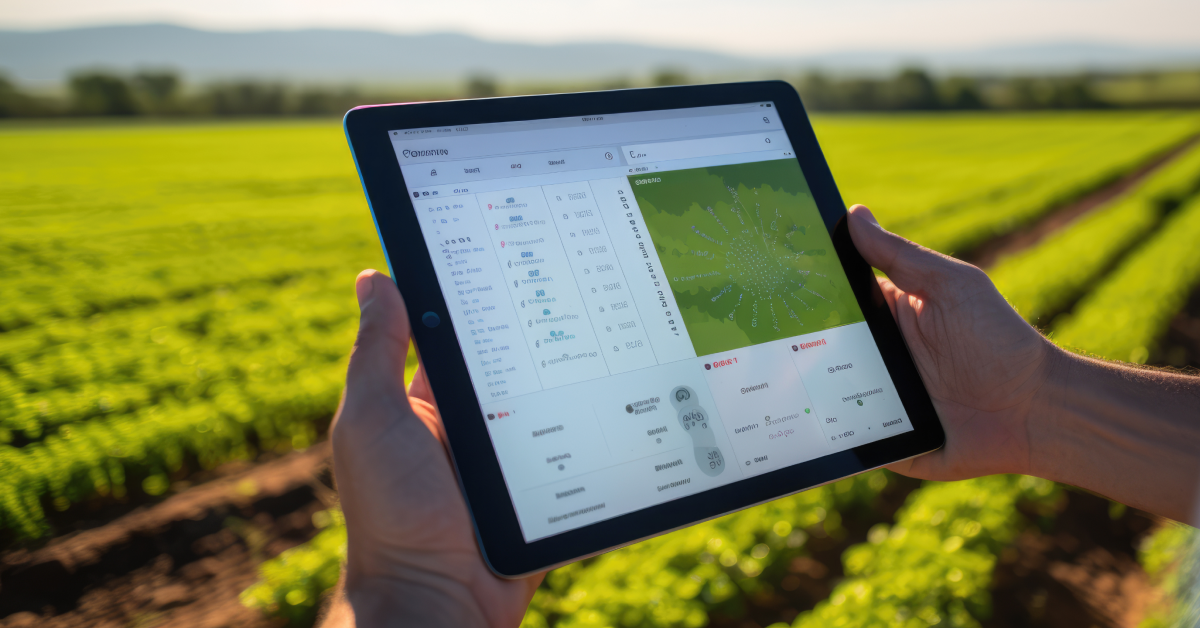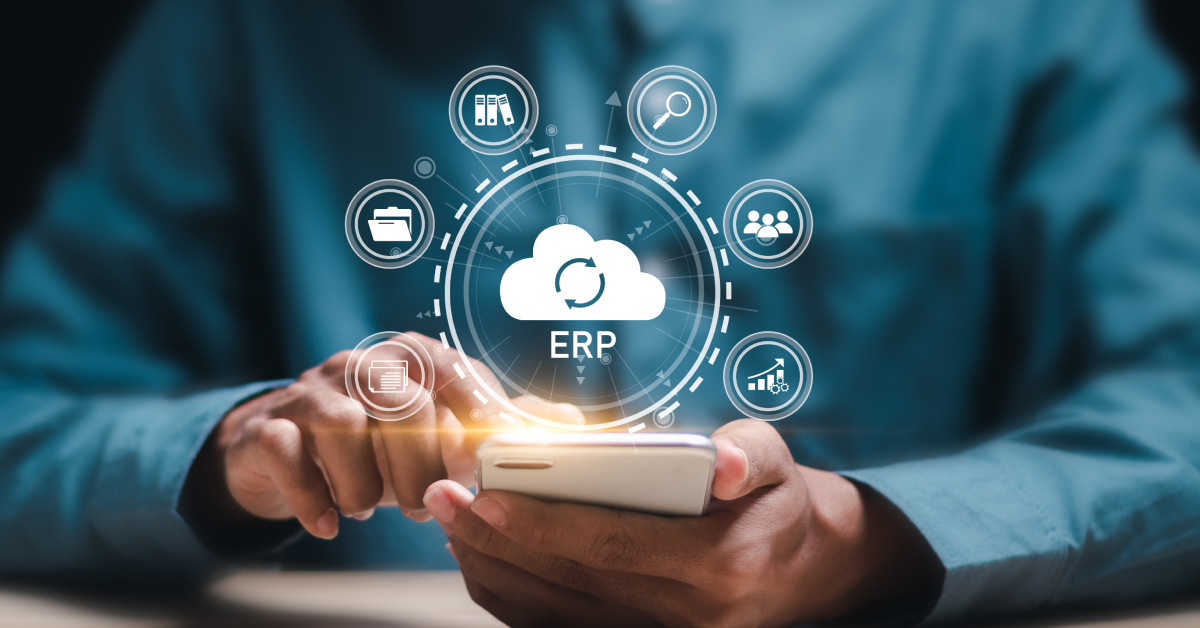The world population is growing at an exponential rate, demanding a 70% increase in food supply by 2050. With the increase in demand and limited agricultural resources, it’s only natural that automation solutions and IoT in agriculture become the norm.
IoT in smart agriculture uses wireless connectivity, sensors, and other IT services to increase crop yields and maximize the limited resources at hand. In fact, with the increase in IoT farming, the global smart agriculture market size is expected to triple by 2025! It means a projected revenue increase of $15.3 billion.
Smart Farming: How IoT Reshapes Agriculture
Smart farming involves using smart solutions and IoT in agriculture and animal farming. Sensors, AI, and/or IoT devices help farmers collect data on their livestock, which in turn helps them make informed decisions.
The use of sensors is critical in smart farming. Sensors monitor machine metrics and environmental impact on livestock and crops, helping farmers figure out optimal resource usage for efficient farming.
Apart from sensors, various advanced technologies, such as Big Data analytics, satellites, and AI systems, are used in agriculture to support data-optimized decision-making. This level of precision with IoT for agriculture helps with resource allocation for water, fertilizer, and pesticides.
Here are some other benefits of smart farming technology in agriculture:
- Data-driven Insights:
Collect data on weather, soil, crop growth, etc., for better business and staff performance tracking. - Enhanced Control:
Predictive capabilities allow for improved production planning and reduced risks. - Cost Management and Waste Reduction:
Precise monitoring helps mitigate yield losses and improve resource usage. - Increased Efficiency:
Automation of irrigation, fertilization, and other processes streamlines operations. - Improved Product Quality and Volumes:
Automation helps maintain higher standards and potentially increase yield. - Reduced Environmental Footprint:
Precise resource application minimizes pesticide/fertilizer use and gas emissions.
IoT Applications in Agriculture
The applications involved in IoT farming target large and conventional farming operations. They also uplift the growing agricultural trends such as family and organic farming and enhance highly transparent farming.
In terms of environmental issues, IoT-based farming can provide many benefits, including efficient water usage and optimization of treatments and inputs.
Here are some applications of IoT technology in agriculture that are improving agricultural practices:
Agricultural Drones
Agricultural drones are the best examples of technological advancement. In the present age, the use of drones in the agriculture sector has increased greatly, and they are enhancing many agricultural practices.
For example, they are enabling farmers to improve their farm practices by looking at processes such as assessment of crop health, irrigation, crop spraying, crop monitoring, field and soil analysis, and planting.
The benefits of using drones in farming are effective crop monitoring and ease of effectiveness of large-scale acreage.
Before drones, satellite imagery was the only source for achieving a large-scale view of a farm and identifying issues and threats.
The images obtained from satellites were expensive, and they did not provide enough accuracy. Today, drones are allowing framers to receive accurate real-time footage.
Drones have made mapping and surveying easy, and they have made it easier to make technological decisions based on information obtained in real time. IoT agriculture drones have eliminated the need for guesswork and satellite imagery.
Agriculture drones are helping to collect data, including:
- Crop and plant health
- Existing lifecycle of crops
- GPS map of your existing crop area
- Division of land according to different types of crops
Precision Farming
Precision farming is considered the most accurate and controlled form of farming for growing crops and raising livestock. This approach to farm management’s most important feature is the usage of IT and other technology like control systems, sensors, robotics, automated hardware, autonomous vehicles, etc.
The trend of precision agriculture is all about the adoption of access to mobile devices, high-speed internet, and low-cost and reliable satellites for positioning and imagery.
Precision farming is considered IoT’s most popular application in the agriculture industry, and many organizations are adopting this technique globally.
Livestock Monitoring
Owners of large farms can make use of wireless IoT in the agriculture market to collect information and data about the location, health, and well-being of their livestock. This information allows them to take the necessary actions when required.
This way, if any animal is injured, sick, or giving birth, it can be given proper care and treatment to maintain its health and eliminate the risk of the spread of disease as soon as possible.
It reduces the cost of labor, as farm owners can easily locate their cattle with the help of IoT-based sensors. Imagine the impact when IoT-based applications are integrated with your cattle management software, allowing you to make informed business decisions and make your farm operations more efficient.
Farm Equipment Monitoring
Keeping track of farm equipment can be difficult for farmers if done manually with multiple farm hands helping out at the farm. Anyone could be using equipment at any given time, and it’s easy to misplace equipment without proper tracking.
That’s where IoT helps out by introducing sensors to track tractors, harvesters, and other farm equipment in agriculture. In IoT, sensors also help collect data on operating hours, equipment location, fuel consumption, and other environmental conditions.
Wireless networks can transmit data to a central platform, where it can be analyzed and visualized to improve overall farm equipment usage.
Moreover, predictive maintenance alerts can let the farmers know beforehand when there are unexpected breakdowns. It can help minimize costs.
Soil Health Monitoring
IoT in agriculture also helps with soil health monitoring to manage the foundation of the farmers’ operations. Using a network of sensors and incorporating data analytics gives farmers the real-time insights they need.
They can learn about the critical aspects of their soil, resource efficiency, and crop yields. Satellites and wireless networks also make it easier for farmers to manage all their data in one place, which can be used for further recommendations.
Moreover, soil health monitoring takes soil moisture data into account so farmers can change their irrigation process to meet their needs. It can also help regulate water usage. Real-time nutrient maps can also come in handy for real deficiencies and excesses while using fertilizers.
Soil health monitoring can be enhanced with precision irrigation, soil erosion monitoring, and carbon sequestration monitoring.
Future of IoT in Agriculture and Animal Farming
Smart systems and IoT agriculture have a promising potential for the future. The technology will surely improve well-being in food production and animal care.
By using IoT in farming, farmers can monitor crop conditions in real-time, improve resource allocation, and minimize environmental impact. Additionally, IoT can help with precise livestock farming, allowing for personalized care and health monitoring of individual animals.
Here are a few potential future uses of IoT in farming and animal care:
Increased Automation and Robotics
More automated tasks such as planting, removing weeds, gathering crops, and feeding livestock will be observed, with AI in agriculture allowing farmers to have more time for strategic decision-making and analysis. Robotics is also anticipated to have a major impact on the agriculture sector, with advancements in self-driving tractors, drones, and even robotic milkers for dairy farms.
AI-powered Decision-making
Artificial intelligence will be essential in analyzing large amounts of data to forecast issues, optimize resource distribution, and customize care for crops and animals. Using machine learning algorithms, AI can analyze data from sensors, satellites, weather forecasts, and other sources to provide insights for improved decision-making.
Vertical Farming and Controlled Environments
The IoT will significantly impact enhancing urban farming systems, ensuring efficient resource utilization and consistent crop production in controlled environments. By utilizing sensors and analyzing data, farmers can effectively manage factors like temperature, humidity, light, and nutrient levels with crop management software to promote optimal plant growth.
Hyper-connected Farms
Advanced sensor networks and communication technologies will create farms with smooth data flow, enabling real-time monitoring of every aspect, from soil health to animal behavior. This highly connected setup will also allow for collaboration and knowledge sharing between farms, leading to more efficient production methods.
Enhanced Precision Agriculture
Precision Agriculture methods like adjusting application rates and focusing on controlling pests will become even more accurate, reducing waste and environmental effects. With the Internet of Things (IoT), farmers can gather information on soil moisture, plant conditions, and pest activity to make informed choices for specific actions.
Focus on Animal Welfare
IoT sensors will monitor vital signs, activity levels, and stress indicators in animals, enabling early detection of illness and personalized care for improved welfare. Moreover, IoT can also help with waste management by monitoring manure levels and automating cleaning processes.
Integration with Blockchain Technology
Blockchain in agriculture technology can guarantee transparency and traceability in food supply chains, establishing trust with consumers and improving market access for farmers. By combining the Internet of Things (IoT) with blockchain, farmers can offer up-to-date information on the source and creation of their goods, ensuring the safety and quality of food.
Conclusion
Shortly, the use of IoT in animal farms will redefine agriculture, paving the way for a more sustainable system. Innovative technologies will enable real-time monitoring of animal health, optimizing the use of resources and minimizing waste.
This seamless integration will result in farms that not only prioritize animal welfare but also produce high-quality products. Furthermore, the widespread use of IoT will facilitate improved collaboration and knowledge sharing between farms.
Essentially, IoT in agriculture represents progress that transforms traditional farming methods into smart farming. It has the potential to create a harmonious blend of productivity and compassionate practices in agriculture. It sparks a change that promises a brighter and more sustainable future for all.
FAQs
What Are the Challenges of IoT in Agriculture?
The challenges of IoT in agriculture include internet connectivity issues on farms, cloud connection, and hardware costs.
What Is the Future Scope of IoT in Agriculture?
IoT will speed up the productivity in agriculture through automation, and data collection of agricultural activities will become a lot easier when IoT is integrated into your systems.
Do You Know the Importance of IoT in the Agriculture Market?
With the advancement in technology, food compliance software is expected to enhance IoT, accelerating high productivity in the agriculture industry to meet the daily necessities of food for the growing population.
What Are the Pros of IoT in Agriculture?
The pros of IoT in agriculture are:
- All data can be collected with the help of installed sensors.
- Business goes automated
- Increase in productivity
- Fewer chances of risks
- Live monitoring of farms, weather, and crops
What Are the Cons of IoT in Agriculture?
The cons of IoT in agriculture are:
- Faulty sensors make wrong decisions
- Tracking issues
- Expensive technology
- Lack of continuous internet connectivity






